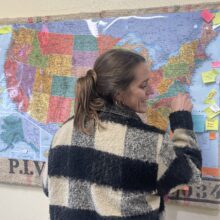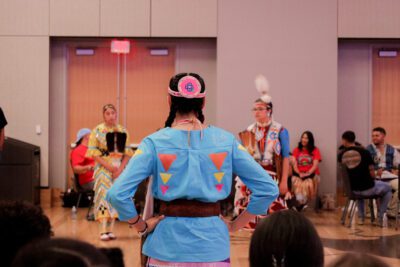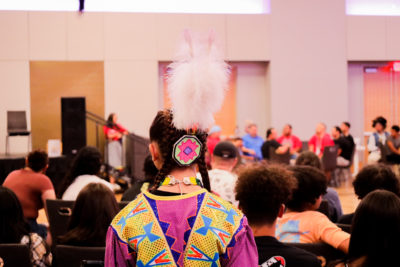|
|
Chloe Thompson, a member of the Mohawk Tribe and a senior at the Middle College in Guilford County, moves around an arena with other Indigenous dancers demonstrating the beauty and joyous sounds of the jingle dress.


She, along with other students, participated in Guilford Native Powwow Education Day, which was Sept. 15. It’s a precursor to the weekend’s big event, the Guilford Native American Association’s 46th annual powwow.
Thompson tells us about her regalia — a handmade outfit that reflects the dancer’s life and community — and the story of the jingle dress.
“It’s originally a healing dance,” she explains.
She and other Indigenous students who participate in the American Indian Education (AIE) program in Guilford County Schools are performing for visiting schools, showcasing their culture to regional students.
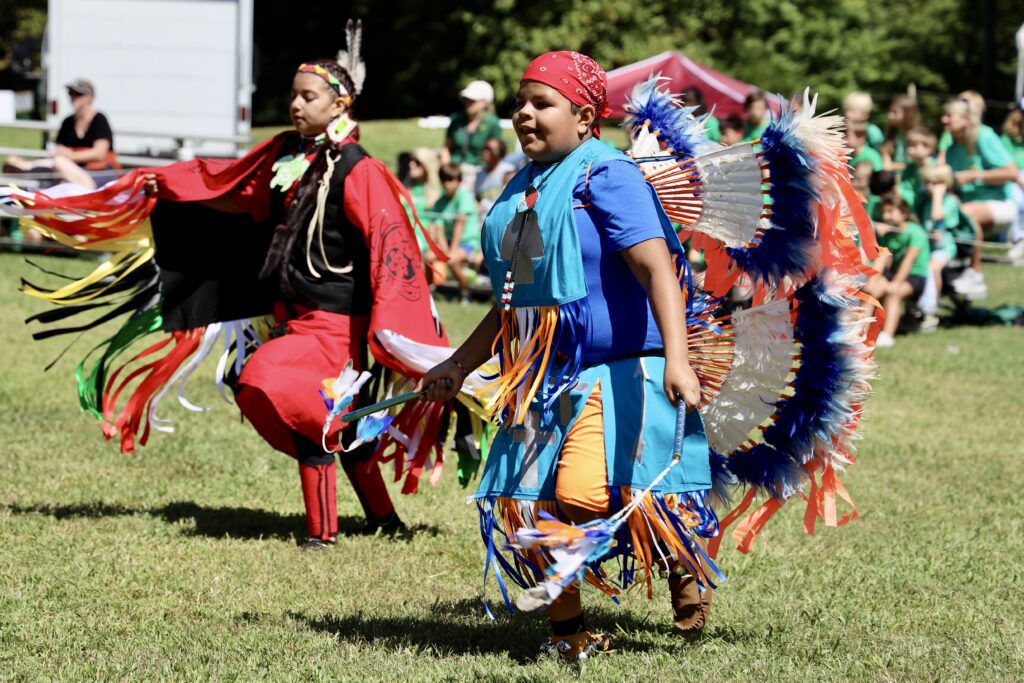

American Indian Education in Guilford County
The AIE program is available to any student in the district who identifies as American Indian/Alaska Native and it provides a myriad of support and activities, serving as a connector for Indigenous families.
There is a culture class that meets every Tuesday, giving students opportunities to engage with each other and in activities facilitated by Indigenous community members. It is where many of the students who are performing on this day learned to dance. The group coordinates college tours, assists with both financial aid and tribal enrollment processes, and focuses on family advocacy, mental health counseling, mentorship, and more.
The key to this program’s success may lie with the program’s coordinator, Stephen Bell. He is a member of the Lumbee Tribe and a social worker at Guilford County Schools. He has been AIE coordinator for the district since 2020.
Kayden Lawrie is in 11th grade and a member of the Coharie Tribe. She started getting involved in the AIE program during the pandemic because Bell was still engaging with students despite the challenges.
“He’s someone that you can call, and all of these kids can call, if they need something — (if they) have a problem, if they’re nervous, if they don’t want to dance,” Lawrie said. “He just helps you through anything and everything.”
Bell recently won the 2023 National Indian Education Association (NIEA) Educator of the Year award. The NIEA is “a group of educators that work to advance and support the Native kids in our school district,” Bell said. He is honored to have been nominated and to have won the award.
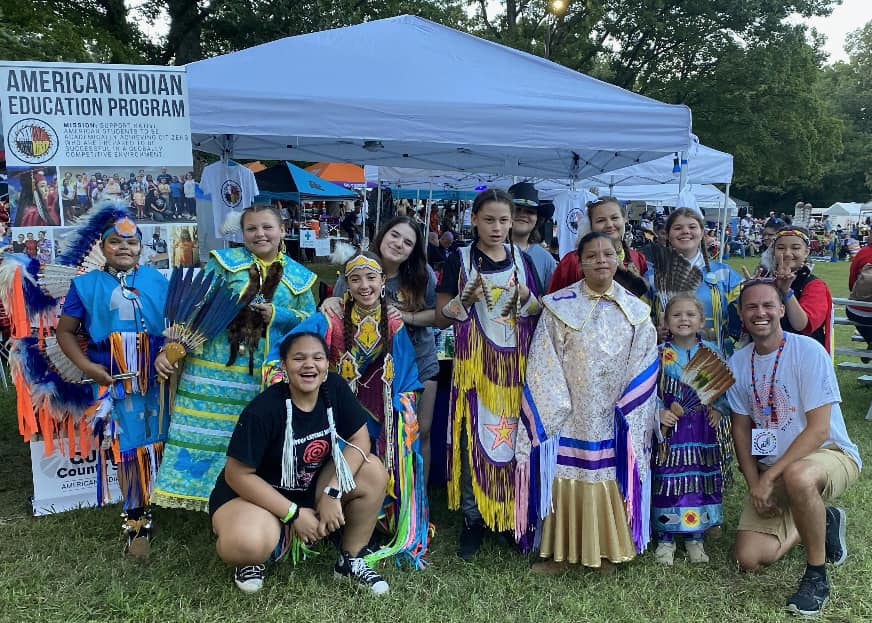

Bell’s favorite part of the job is interacting with students. His focus always remains on elevating their voices. He believes in giving Indigenous students the space to showcase their experiences and in creating a larger stage for representation.
Guilford Native Powwow Education Day benefits all students, those visiting and those performing, Bell said.
“(It helps) our Native kids feel strong about themselves,” he said, “but it’s also to help our non-Native kids learn about someone else’s culture and see maybe how there are some similarities, and maybe how there’s some differences, and it’s okay to be in the same classroom and be in the same school and community with them.”
“To quote Dr. Malinda Maynor Lowery, ‘Native people are often portrayed as like long ago and far away,’ and that’s what we see in textbooks. But when you bring kids here today, they’re able to see that Native people are still here and still alive.”
Stephen Bell, American Indian Education coordinator for Guilford County Schools
Community and family ties
Three hundred students from a range of Guilford County Schools and a group of home school students participated during the day. These visiting students enjoyed dance performances with drumming and singing, participated in making pony bead corn during a craft activity, and listened to Indigenous storytelling.
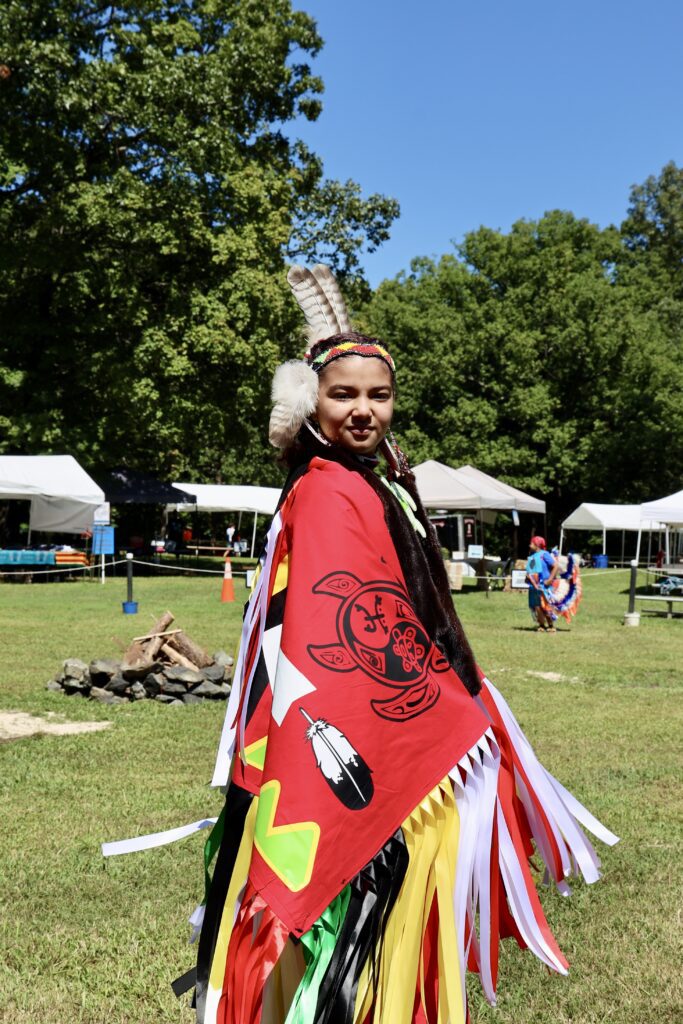

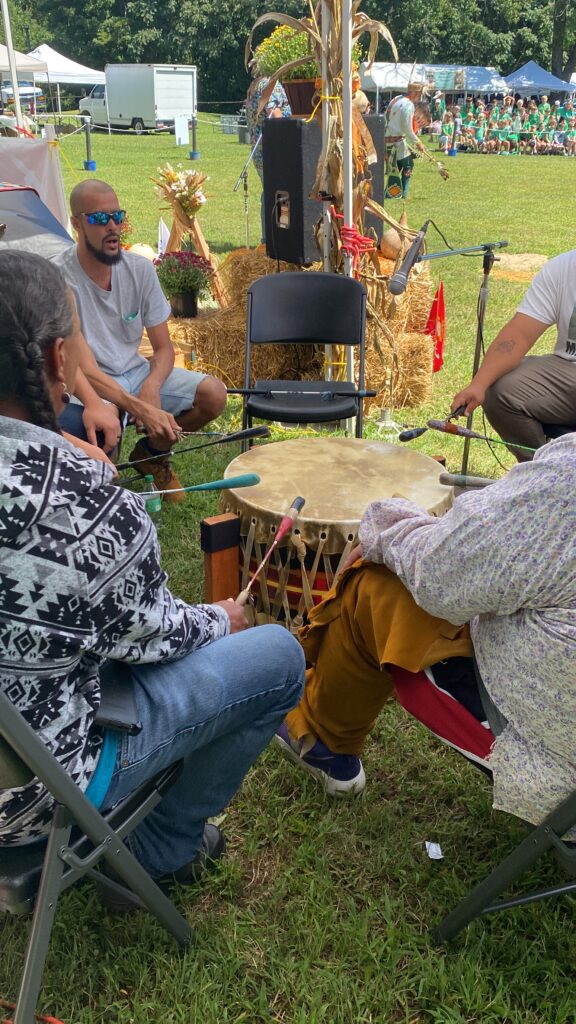

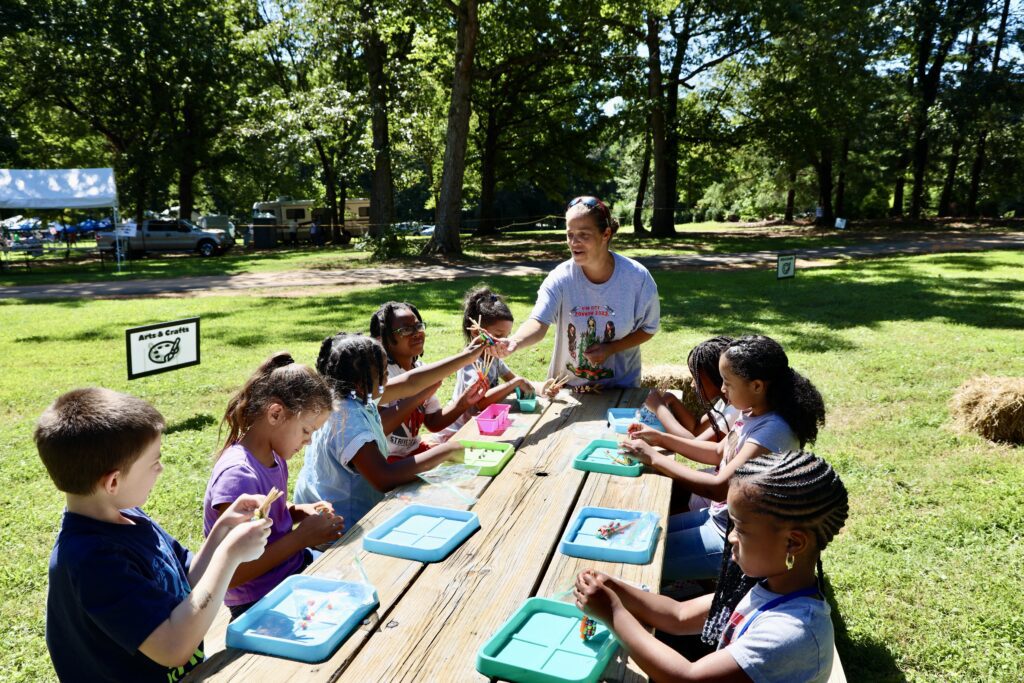

Dana Lawrie and Wyolonda Smith, mother and grandmother to Kayden Lawrie, one of the AIE students dancing this weekend, are running the craft activity beside the arena. Wyolonda used to be the AIE coordinator for Guilford County, and her daughter Dana danced during the powwows.
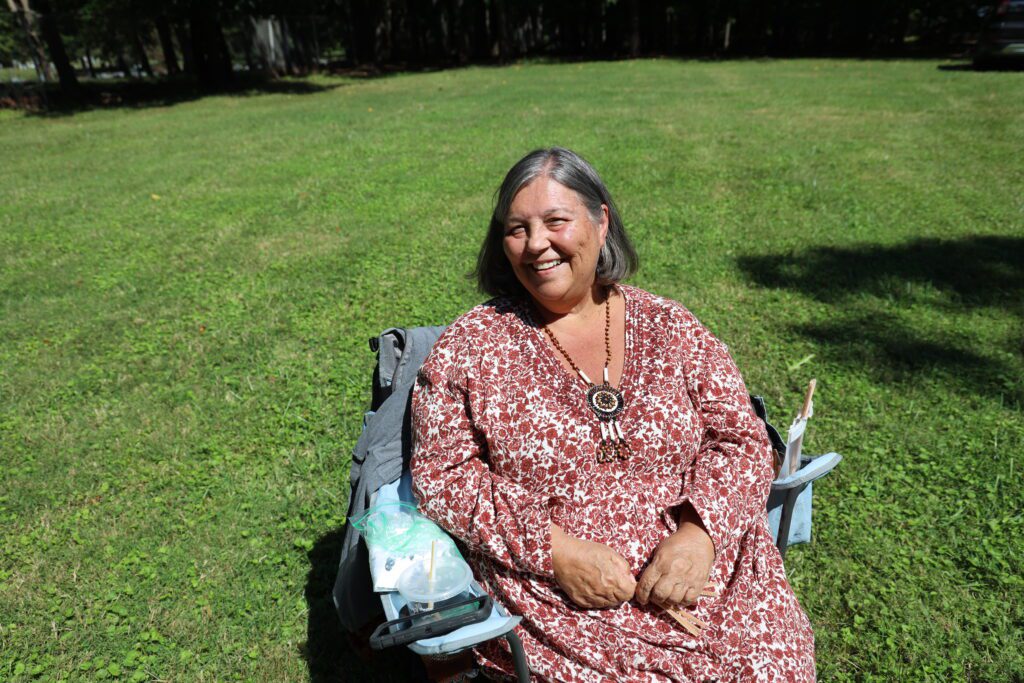

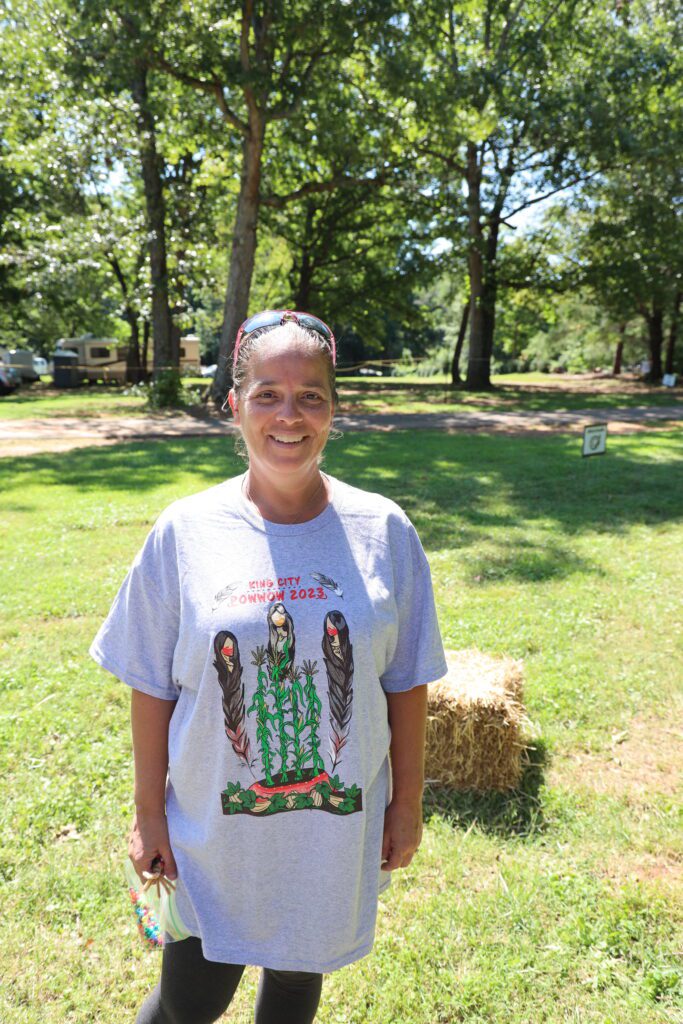

While Kayden dances in the area, she wears pieces and parts of her mother and grandmother on her regalia. She performs in the arena with her mother’s moccasins and buck-skin hair wraps and with her grandmother’s eagle slide fastened around her neck.
What does Kayden want visitors to understand about her community and her family?
“I want them to know that we’re still here. In American history classes, I’ll be sitting there while the teacher uses words like ‘did’, and ‘was’ and ‘used to,’ but we’re still here.”
Kayden Lawrie, Native student in Guilford County
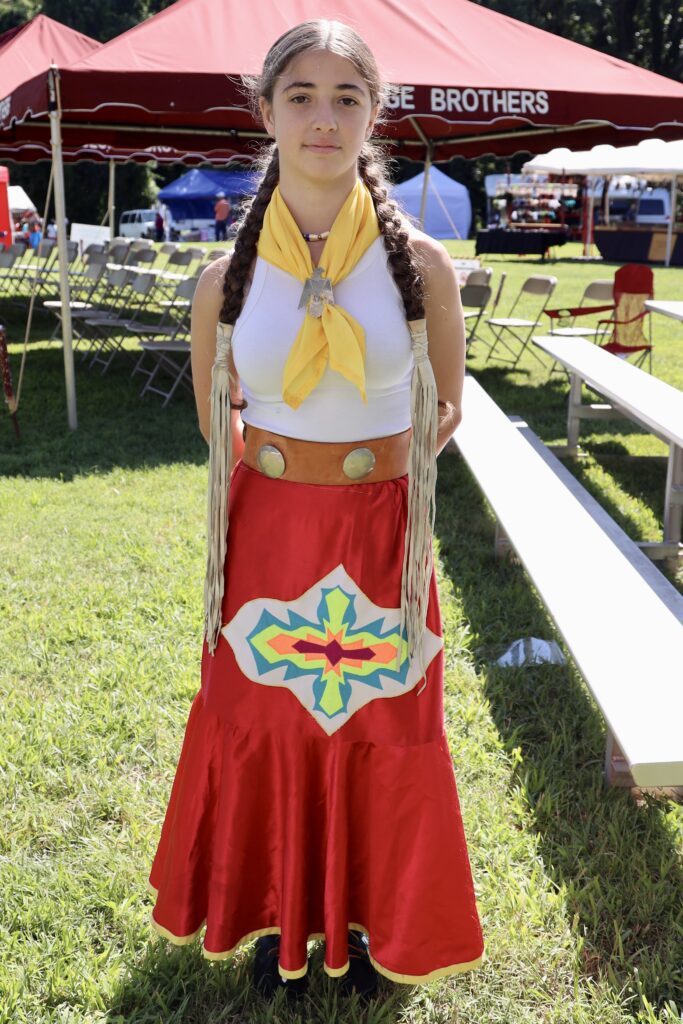

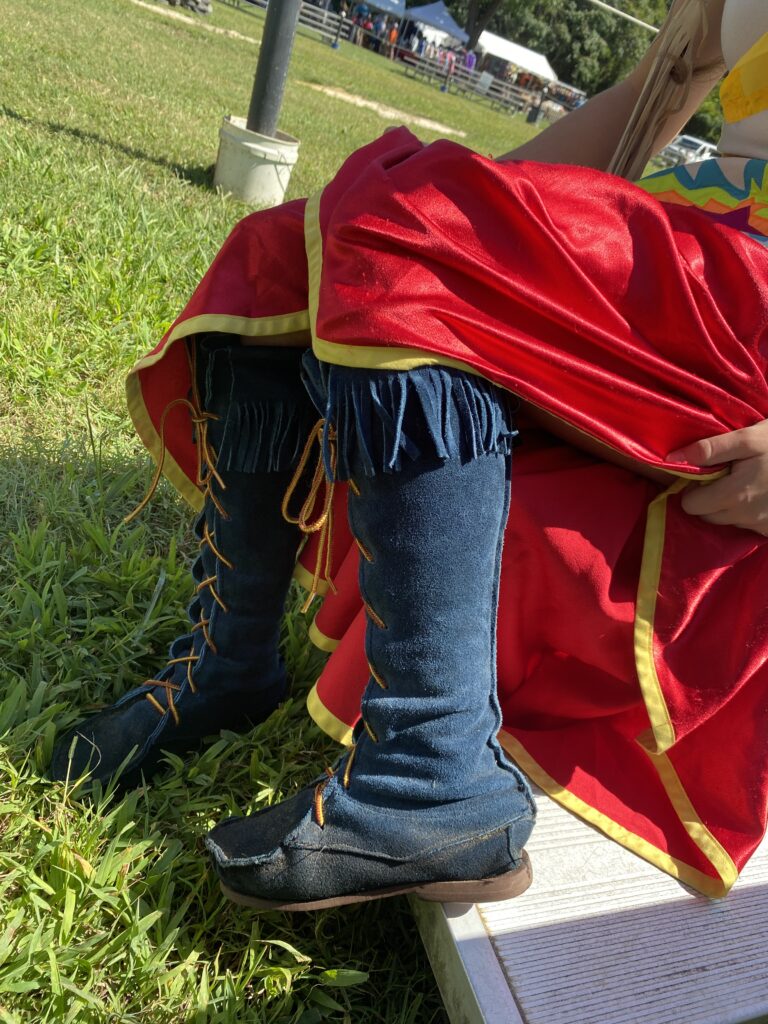

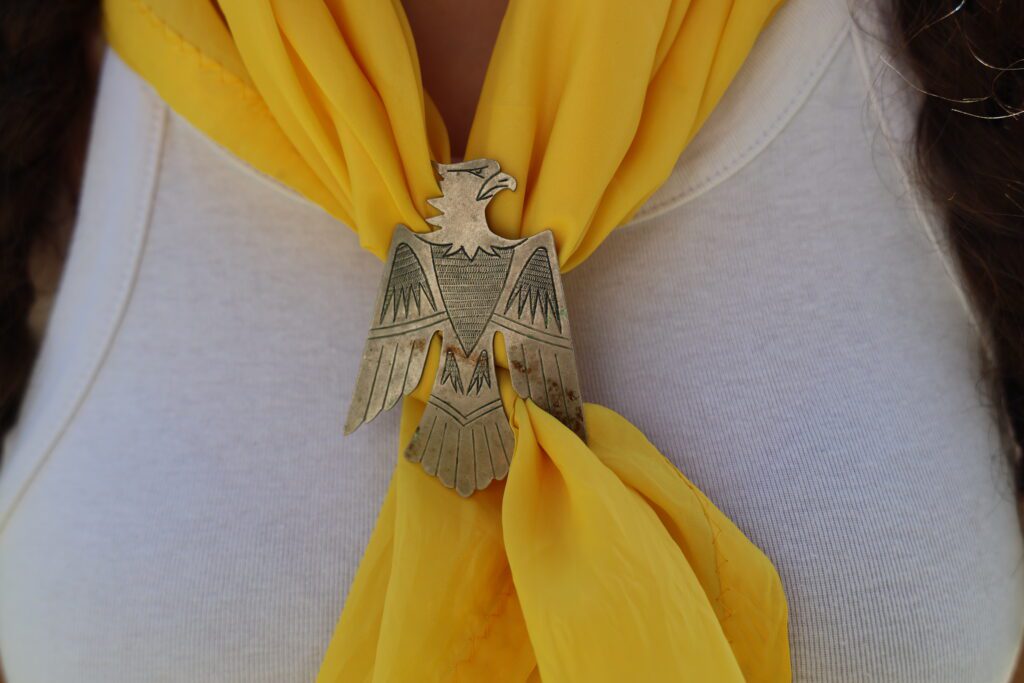

Lawrie chooses to participate in the women’s fancy shawl dance, also known as the butterfly dance. She says for her, this day is fun and helps her bond with the people in her community.
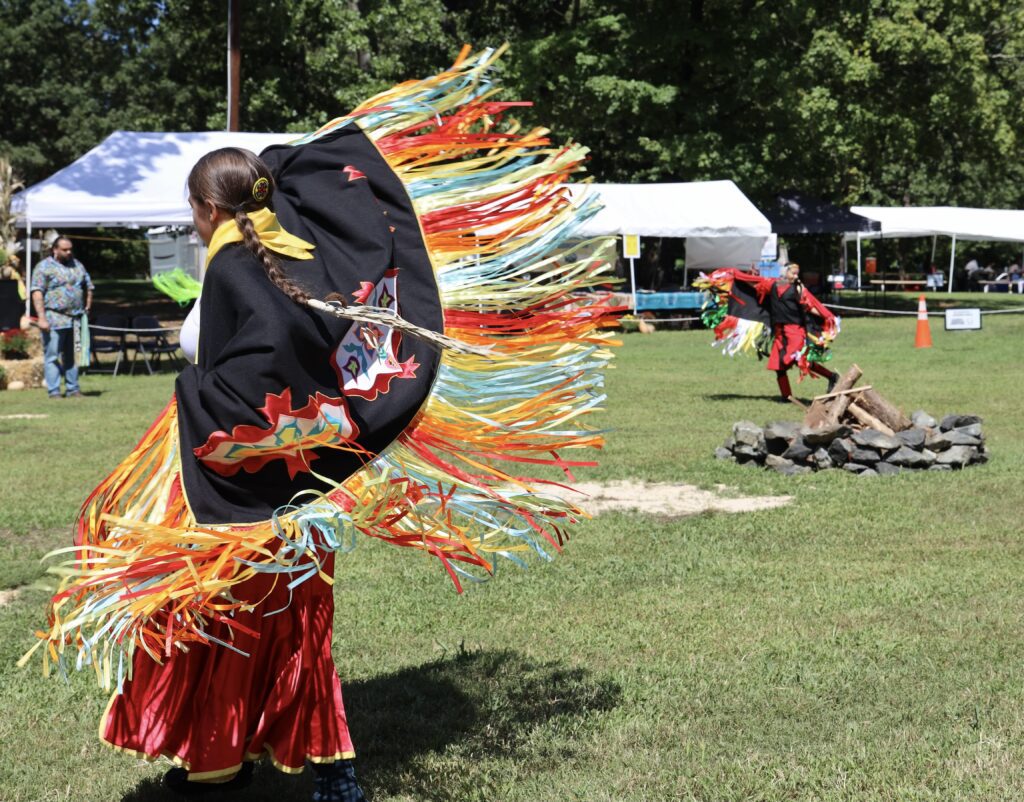

Thompson has been dancing for less than a year in competitions but would participate in intertribals with her sister when she was younger. Intertribals are when all dancers, including visitors, are invited regardless of style into the arena to dance. She said it was a good way to practice and get prepared. She believes dancing at the powwow is a great way to teach others about Indigenous culture, while also celebrating themselves.
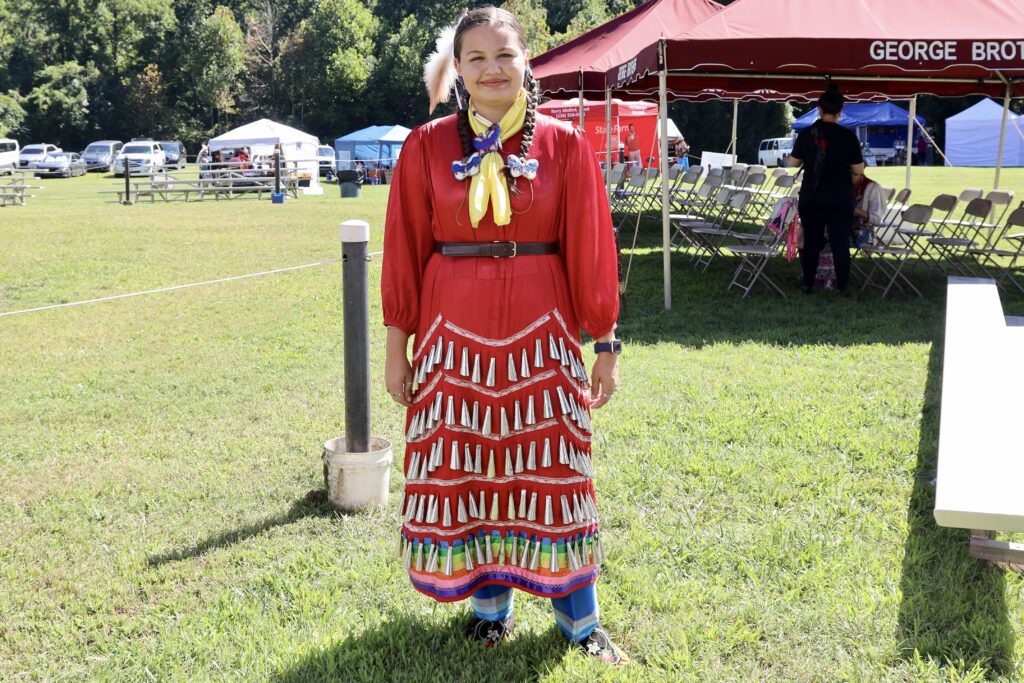

She borrowed regalia for this powwow designed by Raven Dial-Stanley of the Lumbee Tribe, but she is making her own at home with input and help from other members of the community. She wants her regalia to represent the important people in her life, so they are with her while she dances. She said members of the Guilford Native American Association who are helping her sew and bead and are like family.
“The people I’ve met through the program and through doing pow wows and different conferences and stuff, they’re some of my closest family now, even though I’ve only known them for two years,” Thompson said. “Even if we’re not technically relatives, it feels like we are.”
She loves being part of the program because of the people — listening to them and learning about their different stories. What does she want people outside of her community to know about the program, the pow wow, and Indigenous people?
“Through the program, I’ve been able to reconnect with my culture while also teaching people about it. And I think the pow wow is a really great way for those who aren’t as knowledgeable to come and either reconnect with their roots or learn about a different culture and just be able to celebrate together. It’s really beautiful.”
Chloe Thompson, member of the Mohawk Tribe and Middle College senior at Guilford County Schools
Behind the Story
The terms American Indian, Native American, and Indigenous are used interchangeably in this article. According to the National Museum of the American Indian, all of these terms are acceptable, however, the general agreement is to refer to Native people by their specific tribal name. Native peoples often have individual preferences on how they would like to be addressed. A best practice is to use the language that members of the community use to describe themselves.
